When you think of Australian travel and outdoor adventures, dangerous animals and creepy crawlies like Snakes, Spiders or even Crocodiles come to mind!! But the real danger you need to be aware of is when the unexpected happens and you become lost, stuck or injured. Will you and your family be prepared to survive in the elements until help arrives?
We have compiled a simple Travel Survival Kit that is compact and effective. We take this EVERYWHERE we go on our travels (yes, EVERYWHERE …Rob insists that it’s with us all the time, whether it’s a day at the beach or an outback adventure!!!).
We encourage you to take a few minutes to read our Kit List below and make up your own kit tailored to your lifestyle and adventure needs – it may just save your life!
Our Travel Survival Kit
As well as carrying adequate water, food and sun protection on our outdoor adventures, our survival kit includes –
- A water filter and accessories
In the case that you run out of water you can filter your own with any fresh water source. We have a Sawyer which is pretty cheap and very simple to use. Another option is a Life Straw. - Fire starting items (Cigarette lighter, Ferro rod & waterproof tinder)
We like to use a Ferro rod or a ‘flint’ as it is waterproof, small and efficient. As a backup, we carry a cigarette lighter and matches. We keep some wax rope too which is completely waterproof, this stuff is amazing and will help you start a fire in no time and in any weather. - Space Blanket
or Emergency Blanket – This is a big silver plastic sheet to keep you warm and dry. It folds up small and is super light. - Satellite Phone
This can be used from anywhere in the world. We carry a satellite phone with us wherever we go. After the initial $749 purchase fee, it has a monthly connection cost of $15 which may seem a lot to commit to, but after researching the other options on the market we found this was the best device for us as a full time travelling family – and what’s the price on saving a life? $180 a year doesn’t sound too bad. The other option for you to seek emergency help in remote locations is to use a GPS locating device. These are called PLBs and EPIRBs. Once activated, they set off a signal to emergency services and they will dispatch help to that location. The issue is that this is only a one-way SOS signal, so if you have simply broken down, run out of fuel or are a bit lost, this option is not ideal as you will be charged with any rescue fees which can be extremely pricey. - Snakebite bandage
A compression bandage is ALWAYS in our kit, not just for snake bites, it is also useful for strapping injured ankles/knees etc. - Knife & Multi-tool / Swiss Army Knife
- Basic First Aid Kit
Including band-aids, alcohol swabs, Betadine, Hydralyte, panadol. etc - Signal Mirror
This is a small mirror for attracting the attention of planes from great distances. - Whistle
Our brand is Jet Scream, but this Jarvis Walker brand is great too. - 3mm thick cord
We have about 5 metres of multi-use cord which can come in handy for a variety of things. - Duct tape
We have 2 metres wrapped around our cigarette lighter to save on space, again, this may come in handy. - Tweezers
Your Swiss Army Knife may also include these. - Compass
- Head Torch
Although this list may look like a long list of items they are all quite small and fit neatly inside a small Zip Pouch that lives at the bottom of our day pack. We have also shown the kids where it is.
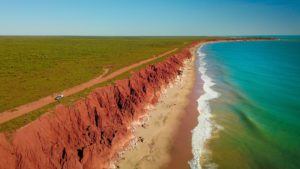
Many of our adventures also include some remote 4×4 driving. A few other items that we always travel with in our adventure truck include:
- A shovel
- Extra water – we store this in 2 separate containers in case one container gets damaged and leaks.
- Extra first aid kit
- Recovery Tracks/Treads
- Rope
- Food – energy bars.
- Warm clothes/jackets
If you are to find yourself lost or injured while out in nature you can read our survival post 5 Survival tips that could save your life , it touches on the 3 most important elements which are finding shelter, fire and water. We also bust a few myths like ‘drinking your own urine’ as it will NOT save your life – it will actually dehydrate you further!’
The main safety elements you need to consider when setting out on any outdoor adventure:
✓ Check the weather conditions
✓ Have a map and compass
✓ Tell friends and family your plans and estimated return time
✓ Use common sense when exploring like sticking to tracks and obey safety signs
✓ If in trouble create an SOS or a large X with rocks or foliage, or create a smoke signal.
✓ Stay where you are, conserve your energy.
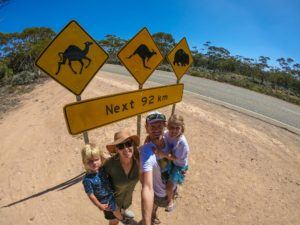
Know your Emergency Signals
If you do find yourself in an emergency situation the below will help you to signal an aircraft overhead. You can write the letter in a clearing using rocks, trees or whatever you can find.
V = Help is needed.
X = Injury, medical help needed.
Y & N = Y means yes and N means no, if this type of communication is needed.
→ = Easy to see arrows can point towards your camp or a signal fire. If you had to keep moving you can also point in the direction you headed.
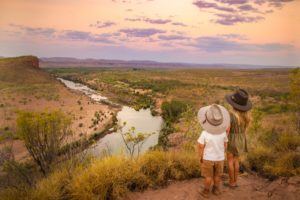
We hope this has helped you be more prepared for your outdoor adventures, and if the unexpected occurs it’s nice to know that you have the tools at hand to keep you safe and comfortable until help arrives… or better still, you can get out of a tricky situation yourself. Do you have any tips to add? Please pop them in the comments below.
Pin this post to Pinterest:
Other articles you may like:
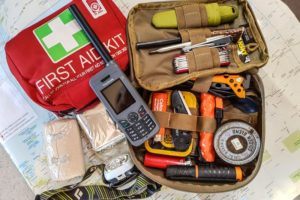
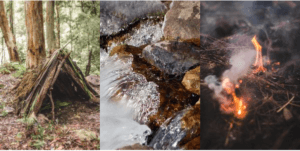
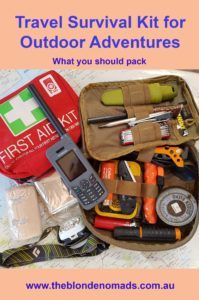
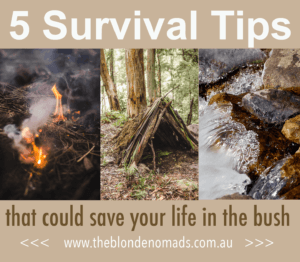

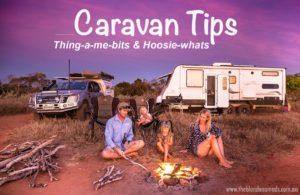



Great read
Thanks for all the tips to make our adventuring safer
Hi there,
Thank you for this great article.
travel survival kits are number one must-have on our trips. sadly some people skip packing this elements but they are soooo important to consider on the packing checklist. i saw lot of people care more about outfits, toiletries and unnecessary items and forget the survival kits and this sooo frustrating.
I know this is an older post, but I thought I’d add my tip here anyway. My number one tip is to go through your safety kit often. Australia’s climate is wild, we get some amazing extremes sometimes, but one constant is heat. And heat -even indirect heat, like sitting in the back of a car for a few hours- can destroy elastic, fluids, plastics, things with stick, and medications. I go through and check lighters for evaporation, plastic casings for signs of degradation, replace my duct tape (it goes ‘gooey’ sticky and unusable after a while), and check the stretch on the compression bandages. Heat stresses batteries, too, which should be replaced often anyway, so if you have anything that relies on batteries, best to switch them out often. A regular check can save your life- especially with that compression bandage! We had one go floppy after being left in the hot car a few times! A safety kit is a must, but a regular inventory is also essential.
Great tips, thanks for sharing